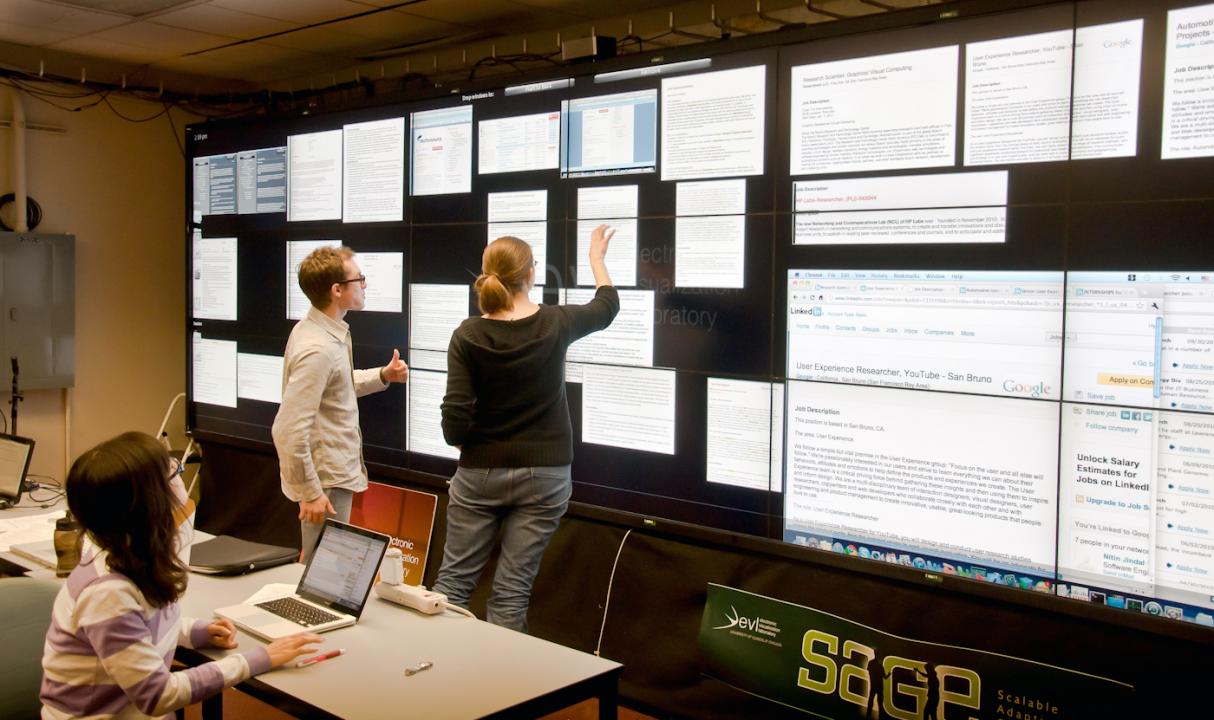|
|
||||||||||||||||||
Collaborative Interaction And Display Space Organization In Large High-Resolution Environments
Authors: Jagodic, R.
Publication: Submitted as partial fulfillment of the requirements of the degree of Doctor of Philosophy in Computer Science, University of Illinois at Chicago, Graduate College In recent years, we have seen a steady increase in the resolution and the amount of collected data that needs to be analyzed or presented. Often, the complexity of the problems that drive this increase requires that multidisciplinary teams work collaboratively towards a solution. Traditional paper-based war rooms have been shown to double the productivity of radically collocated teams when addressing such problems. Large, high-resolution displays have the potential to transform paper-based war rooms into more dynamic digital war rooms by enabling virtual interaction and reconfigurable space. Although of great potential, these affordances alone will not result in increased productivity since our current knowledge of virtual interaction and display space organization is based on contemporary desktop systems with vastly different requirements, necessitating new techniques tailored for wall displays. This dissertation first presents a unique interaction framework that allows multi-user, multi-modal control of wall displays along with scalable, distributed user interface widgets for building novel interfaces for collaborative large, high-resolution environments. The framework enabled subsequent investigations of the user interaction and display space organization issues through numerous real-world usage scenarios. The investigations were aimed at shedding light on two specific questions. First, what is a set of interaction requirements and modalities appropriate for collaborative work across a broad range of wall display use cases? Second, what display space organization techniques and behaviors do users employ in collaboratively managing a large amount of information on wall displays? Based on observations from a number of use cases, a sample set of tools was iteratively developed for addressing the issues of input control and display space organization. Lastly, the developed tools were evaluated in a simulated collaborative analysis task for the purposes of understanding how the developed techniques serve to support traditional war rooms. Date: July 1, 2011 Document: View PDF |